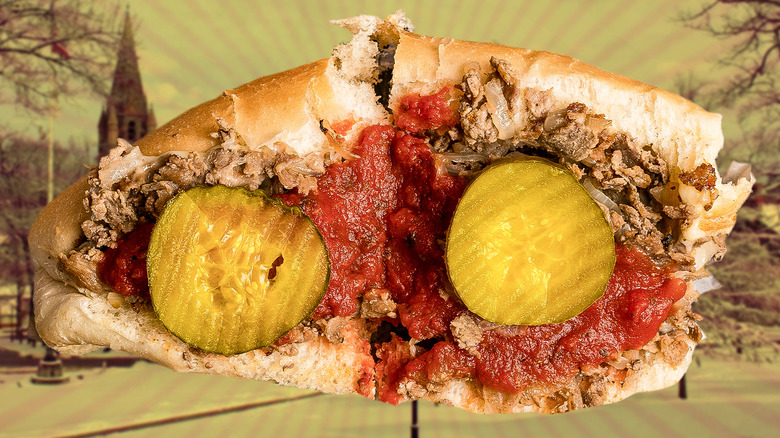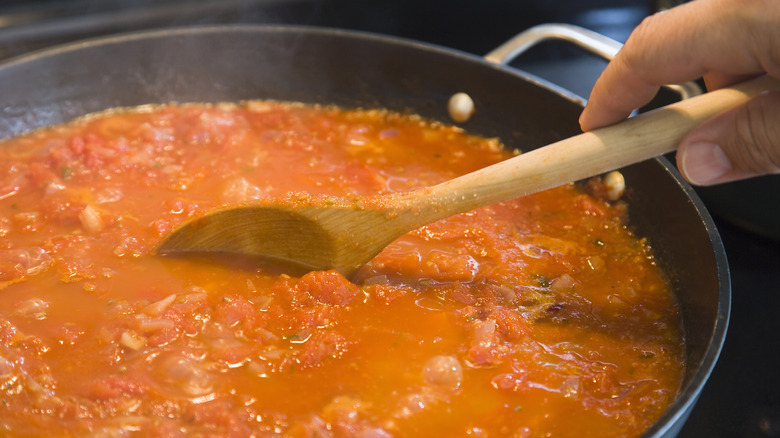The Tomato Sauce-Topped Cheesesteak That You Won't Find In Philly
A Philly cheesesteak has got it all, right? Unctuous, savory shaved meat browned on the griddle, gooey melted cheese — or whiz, if you're "down wit it" — caramelized onions and peppers, and a hearty roll to soak up all the grease. But what about something to cut through that richness, a little acid for balance? For that, Pennsylvania's Lehigh Valley has you covered.
Whereas in Philadelphia asking for red sauce on your cheesesteak might not go over well, in Lehigh Valley steak shops it's the proper way to do it. The steel-making region centered around Allentown is blue-collar, sporting a proud Italian heritage, which explains the tangy tomato sauce on the beef sandwiches. If it seems like sacrilege, hold your comments until you've tried one. The sauce provides a delightfully bright counterpoint to the umami and fat bomb that is a cheesesteak. It gets applied to the steak on the griddle so it has time to intermingle with the meat and pick up a little bit of caramelization itself while lightly deglazing the bits of browned beef. Lehigh Valley cheesesteak shops usually apply the cheese after the meat and sauce are nestled in the roll, placing the whole affair into the oven to get it nice and melted.
A cheesesteak sauce with zing
This sauce isn't from a can and you wouldn't put it on pasta or ladle it onto a pizza. Lehigh Valley cheesesteak sauce is a purpose-specific item calibrated for its role. Just as ketchup, mustard, relish, and pickles have dialed up acidity that makes them abrasive on their own but perfect as part of a harmony, so too does this sauce bring the zing. As with a great many regional foodstuffs, every eatery has its own slightly different take on how to make a batch of proprietary sauce.
Tomatoes are, of course, the star of the show, but tomato paste is also added for depth along with diced onions and herbs like dried oregano and basil. The sauce is generally thinned out with either vinegar, Worcestershire sauce, or some combination thereof. Odd though it may seem, these elements further deepen the flavors and make the sauce more of a condiment to be paired with meat and cheese. To that end, the sauce is usually pureed to some degree to make it the right consistency for topping a cheesesteak.
Please note the above use of the word "generally" because not all cheesesteak shops in the Lehigh Valley use an acidic ingredient in their sauce recipes; some are a bit more straightforward using only tomatoes, herbs, and onions. It's that lack of dogmatic adherence and willingness to interpret that makes regional foods like Lehigh Valley cheesesteaks something weird and wonderful.

